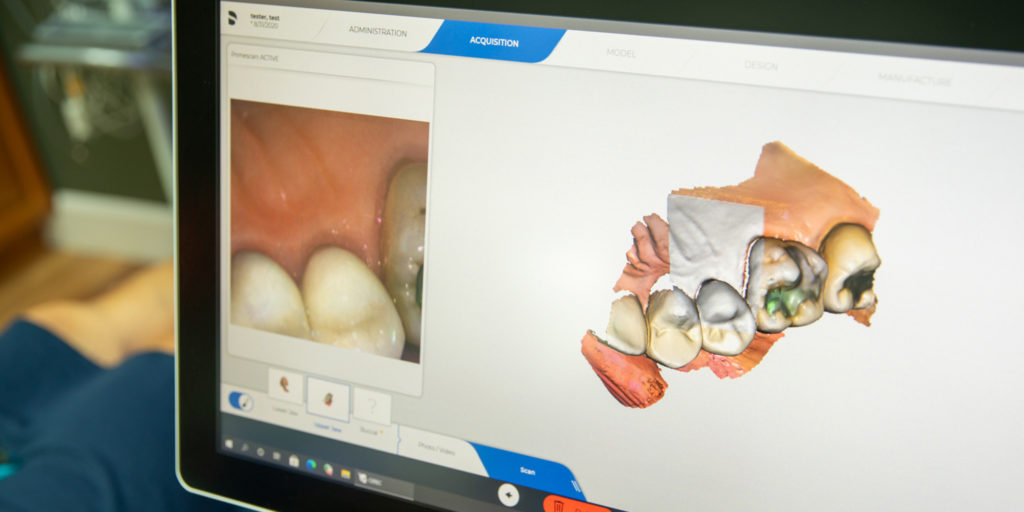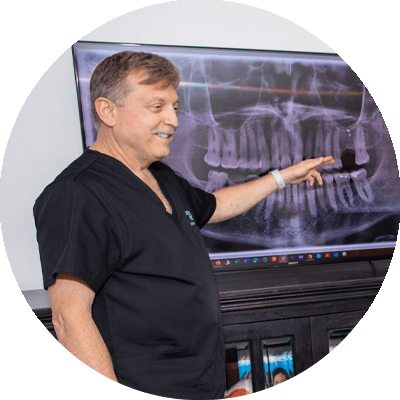

Are you ready to smile confidently again? With dental bridges, our dentists in Spring Hill, TN can replace your missing teeth and restore function to your smile. Don’t wait any longer! Contact our dental office today by calling 931-486-0700 to schedule your consultation.
Our Spring Hill, TN dentist explains the dental bridge procedure to ensure you know what to expect.

The first step in the dental bridge process is a consultation with our Spring Hill, TN dentist. During this appointment, Dr. Robinette will evaluate your oral health, including your teeth and gums, and discuss your options for replacing missing teeth. They may also take digital X-rays and impressions of your existing teeth, to create a model of your mouth, ensuring your custom bridge is a perfect fit.
At this appointment, They’ll also recommend the best dental bridge type. They may recommend a traditional dental bridge, implant-supported bridges, or another option.
Once our dentist has determined that a dental bridge is the right option for you, they’ll prepare the abutment teeth. This involves removing a small amount of enamel from the teeth that will support the bridge. Dr. Robinette will then take another impression of your teeth to create a mold of your mouth which will be used to create your permanent bridge.
While your permanent bridge is being made, we’ll place a temporary dental bridge to protect your abutment teeth and help you eat and speak normally while waiting for your permanent restoration to be created.
Once your permanent bridge is ready, you’ll return to our Spring Hill, TN dental office for the fitting and placement appointment. During this appointment, Dr. Robinette will remove the temporary bridge and fit the permanent bridge to your abutment teeth. They’ll then make any necessary adjustments to ensure a comfortable fit. With dental cement, it will be set into place.
After your bridge has been placed, we’ll schedule a follow-up appointment to ensure that everything is healing properly. During this appointment, Dr. Robinette will check the fit of your bridge and make any necessary adjustments. They’ll also provide you with instructions on how to care for your new bridge to ensure its longevity.
Dental bridges are an effective solution for people who have missing teeth. They’re used to bridge the gap between teeth by anchoring a false tooth (pontic) to the surrounding natural teeth (abutments). The dental bridge process involves several steps, including consultation and evaluation, preparing the abutment teeth and placing a temporary bridge, fitting and placement, and a follow-up appointment.
A dental bridge consists of the following components:

After your dental bridge procedure, there are certain practices that you’ll need to follow, including:
While dental bridges are generally safe and well-tolerated, some potential risks and complications may include sensitivity, discomfort, or gum irritation after the procedure. In rare cases, there may be an allergic reaction to the materials used in the bridge. Patients must follow their dentist’s aftercare instructions to minimize any potential issues.
Most patients experience minimal discomfort during the dental bridge procedure. The dentist will use a local anesthetic to numb the area around the teeth being treated, ensuring the patient is comfortable throughout the process. After the procedure, there may be slight soreness or sensitivity, which usually subsides within a few days. Over-the-counter pain relievers or prescribed medications can help manage any post-procedure discomfort.
Ready to have a complete smile? Schedule your appointment with our Spring Hill, TN dentist today by contacting our dental office at 931-486-0700. Dr. Robinette will evaluate your case and discuss dental bridges with you.
I understand the information disclosed in this form may be subject to re-disclosure and may no longer be protected by HIPAA privacy regulations and the HITECH Act.